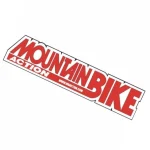MBA Tech: Making Sense Of Rear-Wheel Spacing

There’s a pretty good chance your next bike is going to come with a thru-axle. Gone are the days when this axle type was reserved for big-hit bikes. New technology and materials have made the designs easier to use and lighter weight, to the point where even the most weight-conscious cross-country racers prefer the solid feel of a big, hollow axle.
Choosing the right axle for your riding style is surprisingly simple. We want to give you the knowledge to make the right call and help make sense of the endless string of numbers and overly technical terms.
A QUICK HISTORY
The first quick-release system was designed by Tullio Campagnolo in 1927. According to the story, after difficulty changing a flat tire during a race, Tullio wanted a system that would allow the wheel to be removed more quickly and easily than with a bolt-on system; his solution was the first iteration of the modern quick release.
With this system, the axle that bears all the loads is fixed inside the hub. The quick-release skewer itself does not bear any of the load and is only designed to secure the wheel to the frame.
This system is still used on many mountain bikes, but the thru-axle is quickly gaining in popularity.
THE THRU-AXLE REVOLUTION
A thru-axle is a larger-diameter, usually hollow, axle that passes directly through the hub. It is then secured to one side of the fork leg or rear frame member by threads. While the bearings remain in the hub shell, the removable axle takes care of securing the wheel to the frame and bears the loads from the bike and rider. With this system, the axle is no longer integrated into the hub; it is a removable piece designed to work with a specific frame or fork.
Thru-axle designs offer a stronger and stiffer connection than a standard quick release. They also have a self-aligning feature that offers better frame and fork alignment, allowing the frame, fork and wheel bearings to settle into their lowest possible friction points. Simply put, a straight frame or fork is a happy one, and the thru-axle makes it easier for manufacturers to build them.
While thru-axles are usually heavier than their quick- release counterparts, the strength, stiffness and self-aligning benefits often justify the weight penalty.
HOW HUBS ARE MEASURED
When an axle is named, it’s always named with two numbers, like 10×135, 12×142 or 12×150. The first number is the diameter of the axle, and the second number is the width of the hub. Both numbers are the outside-to-outside distance in millimeters. This rule holds true for all frame designs, manufacturers, and for both front- and rear-wheel systems.
10×135-millimeter Quick Release

This is your standard quick-release-style rear axle. It’s the original mountain bike rear-wheel standard, but it is still very common on lightweight, cross-country bikes and less-expensive trailbikes.

12×142-millimeter Thru-Axle

This system is the new standard for trailbikes. It features a larger-diameter axle and hub shell, but still sports the same chainline as the 10×135 system. The frame is slotted to accommodate the extra 3.5 millimeters on each side. This not only creates a stronger interface, but also helps the rider slot the wheel in easily and quickly.

Versions of the standard include the Syntace X-12 axle, SRAM Maxle and Shimano system. Each one of these axles is compatible with any 12×142 hub, but they are not compatible with each other. The difference between the systems is not their size, but rather the mechanics by which they attach to the frame. Several frame manufacturers offer interchangeable dropouts if the rider wishes to swap between axle types, and many newer wheelsets are compatible with both the 10×135 and 12×142 standards with a simple end-cap swap.
12×150-millimeter Thru-Axle

This is the big gun. The 12×150-millimeter standard is reserved for long-travel bikes, as the weight penalty would simply not make sense on a shorter-travel bike. The wider hub also requires the frame to utilize a wider, 83-millimeter bottom bracket to keep the chainline working properly.

These axles are also not typically tool-free systems, requiring a pinch bolt to secure them. You won’t see this rear-wheel spacing on anything other than a downhill or “fat” bike.




